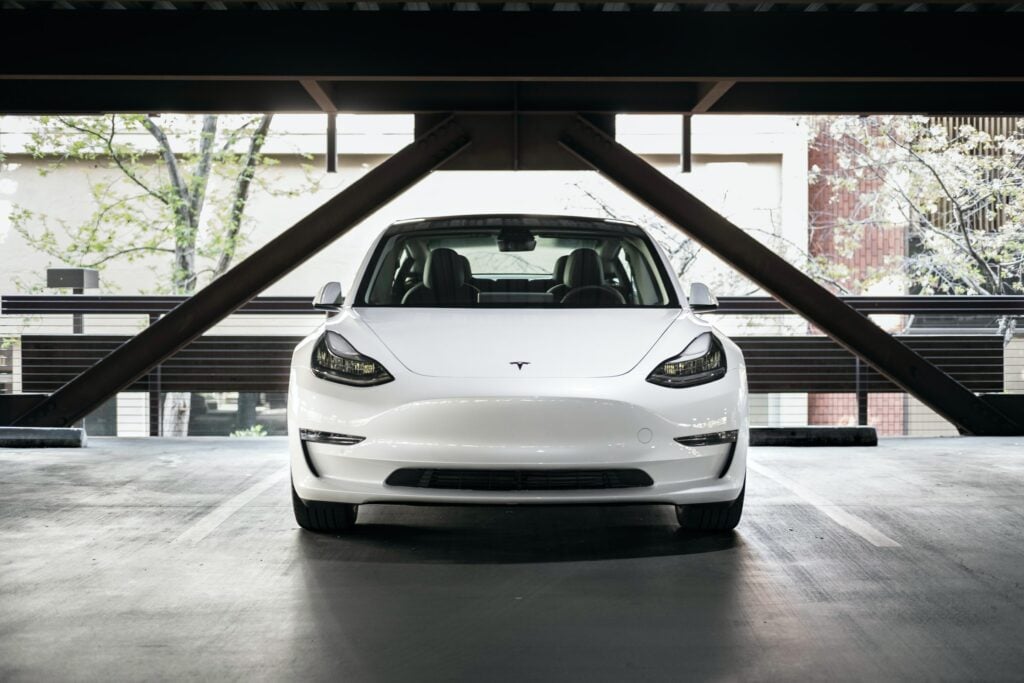Insurance might not be the most exciting thing to spend your hard-earned cash on, but making sure you’re covered financially from unexpected situations is always a good idea. Read on to find out how insurance works, as well as which types of insurance in the U.S you might need.
How Does Insurance Work?
Each month you pay an agreed amount (a premium) to an insurance company. In exchange, they agree to protect you financially from a whole range of possible risks.
Insurance therefore provides a way for you to protect yourself from the unknown. It acts as reassurance that if something goes wrong you will not be held financially responsible. For a small sum of money every month, you have the peace of mind that an insurance company is there to help with any financial compensation.
The amount you pay in insurance depends on a wide range of factors. Your age, your profession, where you live, your financial history, and the type of cover you require all play a part in the price of your policy.
Prices can vary between companies so it’s definitely worth spending some time comparing deals. Always make sure you shop around to ensure you’re on the most competitive pricing.
Types Of Insurance In The U.S
Some types of insurance are optional, whereas others, like car insurance, are required by the law. If you have a mortgage, insurance is required by your lender, although not the law.
It is generally advised that if there is a lot of financial risk on the line, purchasing insurance is a sensible option.
If you’re not sure whether you need insurance, consider if you could afford to pay for any damages off your own back. Do you have enough money to cover costs if you need to pay for car damages, or are suddenly unable to work? If the answer is no, then you should consider getting insurance. Here are seven different types of insurance in the U.S that you might need.
1. Health Insurance
Your health is extremely important. Health insurance gives you the peace of mind that a medical issue will not also result in a financial issue. Having this type of insurance will help you pay for any medical services, and in some cases also any subscription drugs needed.
You can get three types of health insurance. The first, and normally the most expensive, is fee for service health insurance. This is where healthcare professionals are paid for each service performed, and generally gives you access to a large network of doctors and hospitals.
You then have Health Maintenance Organisation insurance. Unlike a fee for service plan, all medical services are provided on a pre set fee. Your choice of health care providers is also limited to those who are part of the HMO plan.
Lastly there is Preferred Provider Organisations. PPO plans offer a lot more flexibility when it comes to choosing when and where you get your healthcare from, although they tend to be a little more expensive.
When choosing which plan to opt for, make sure you fully understand what is covered and assess which level of cover you think is best for you.

2. Car Insurance
If you drive a car in the U.S then you are required by law to purchase auto insurance. The type of auto insurance policy you take out can vary. Some people are confident with only taking out the minimum coverage, whereas others prefer to protect themselves for a broad range of eventualities.
Liability coverage is one form of auto insurance. It can be split into two sections – bodily injury and property damage liability. If you are responsible for an accident, both of these types of liability insurance will help you cover the costs from the other party.
It’s important to note that liability insurance only helps to cover the costs from the other party – it does not financially cover any damage to your own car, or property.
Personal Injury Protection, or Medical Payments insurance covers any injury due to an auto accident. PIP is the more comprehensive of the two as it covers lost wages as well as medical expenses. Depending which state you live in, this type of insurance may be necessary.
There is also uninsured/ underinsured insurance – this can help protect you financially if you’re involved in an accident that is not your fault, and the other driver isn’t properly insured.
You can also purchase collision coverage, comprehensive coverage, roadside assistance and rental reimbursement, so shop around to see which type of car insurance suits you the most.

3. Life Insurance
Next on our list of types of insurance in the U.S, we have Life Insurance. When you take out life insurance, you agree to pay a premium to an insurer and in return, they commit to paying a certain amount of money, to a person of your choice, upon your death. This gives you the peace of mind that when you pass, your family has enough money to continue paying bills, mortgage repayments or any other debts.
You can take out Term Life insurance, or Permanent insurance. The least expensive option out of the two is usually Term Life insurance. With this type of insurance you agree to a specific length of time for the policy to cover you. If you do not die within the agreed term, the death payout is not paid, and you will lose the money you paid in premiums.
If you don’t like the sound of this, then you could consider getting Permanent insurance. Here you’ll be covered for as long as you keep paying the premium. With this type of life insurance, you are guaranteed a payout.
4. Homeowners Insurance
When you take out Homeowners insurance, you enter into a contract between you and an insurer that says they will provide financial compensation for your property and all your belongings inside, in the event of structural damage or theft.
Having this type of insurance means you won’t be left to pay any hefty fees if you find yourself having to spend money repairing or rebuilding your home after events like a fire, pipe flooding, theft, or vandalism. Some homeowners insurance also covers the medical expenses if someone outside of your family is injured on your property.
When it comes to home insurance, there are a couple of types of cover you can choose from. You most commonly see them as Actual Cash Value Policy and Replacement Cost Policies.
The difference between the two is pretty self-explanatory; actual cash value takes into consideration depreciation and inflation of the property. Whereas replacement cost policy ensures that you’ll be compensated with comparable costs. It’s for that reason that replacement cost policies are generally considered the better option. (Although they do come with a slightly higher price.)

5. Renters Insurance
If you rent your home, you might want to consider having renters insurance. This will help protect yourself and your things in the event of a fire. A theft. Or, any other unexpected issues.
This type of insurance in the U.S only protects the items inside the house, not the actual house itself. That’s because landlords are responsible for organizing their own buildings insurance.
A basic policy would therefore cover the cost to replace, or repair, your personal belongings. It would cover your personal liability in the event that someone injures themselves on your property. And, it would cover any additional costs that you might incur if you’re forced to leave the property during repairs (hotel costs).
To decide how much cover you need for renters insurance, spend some time calculating how much you think all of your belongings are worth. This is everything from your tech, to your clothes, that you would have to spend considerable money to replace.
6. Travel Insurance
It’s a sensible idea to have travel insurance any time you take a trip. That’s because there’s a whole multitude of things that can go wrong while traveling. You run the risk of getting sick, being pickpocketed, losing your luggage, or your flights being cancelled.
Most insurance policies cover a combination of these risks in one plan. If you’re already covered for some of these risks (for example, homeowners insurance might cover you if you lose your personal items) then make sure you shop around, assess all the different options, and purchase a policy that suits you.

7. Pet Insurance
Lastly, pet insurance is another type of insurance in the U.S that you might need.
If you have a dog or cat, then you’ll know that they’re more like a member of the family than just a pet. If something was to happen to them, you’d want to give them the best care possible. But, vet fees are not cheap.
Getting pet insurance can therefore reduce any financial worries associated with the cost of vaccinations, and medical assistance like emergency surgery. For a monthly fee, you can get most of the costs reimbursed. Normally only having to pay a small portion of the bill.
The cost of pet insurance depends on a few factors. Other than the level of cover you require, your insurance policy takes into consideration your pets species, their breed, their age and which area you live in.
When it comes to pet insurance, you have a couple of different options. You have Accident Only, Time Limited, Maximum Benefit and Lifetime.
Accident Only is usually the cheapest policy, but normally comes with financial and time limits. Time limited gives you a certain allowance, which gets renewed every 12 months. Maximum Benefit covers each medical condition up to a financial limit and allows you to claim more than once for a certain condition. And lastly, Lifetime which is the most expensive option covers your pet for the duration of their lifetime, providing you renew each year.

Claiming Insurance
We’ve looked at the types of insurance in the U.S, but what happens when you want to claim one of these insurance policies?
Insurance companies collect the money from premiums across all their users and save it. When one policyholder makes a claim, there is then enough money to pay the claim.
It’s for this reason, that even if you do not make a claim, you will not get the money you paid in premiums back. You might pay into your insurance policy for 5 years before ever needing to make a claim.
If you need to make a claim, there are a couple of things you can do to make the claiming process run more smoothly. The first is to make sure you keep a record of everything you’re claiming for. Do this through receipts, cancellation emails, policy documents, etc.
Next, check your policy documents to check if you are covered for what has happened. Your policy might give best practice instructions that you need to follow. For example, if something has been stolen, your policy might say you need to report it to the police within 24 hours, so make sure you check.
Once you’ve gathered all the information and facts, speak to your broker. They will offer advice on how to proceed with the claim. If you didn’t book your insurance through a broker, call your insurance company and begin making the claim.
Summary
We’ve rounded up seven different types of insurance in the U.S that you might need. Whichever type of insurance you think you might need, make sure you regularly shop around for the best deals. You could save hundreds of dollars every year by taking 10 minutes to compare deals.
Use Emma to search through a variety of the most competitive policies on the market. Just head to the Save Money tab and select which type of insurance you’re interested in viewing.
Thinking about comparing your insurance policies? Let us know by joining the convo on the Emma Community!
Emma is a money management app that connects all your bank accounts to track your monthly spending and subscriptions. We’ll help you visualise and take control of your finances. Make sure you aren’t overspending and show you practical steps to start budgeting effectively.







[…] because a FHA mortgage involves a type of insurance you are required to pay a premium. That means you should be prepared to pay both an upfront cost and […]